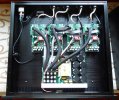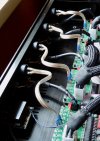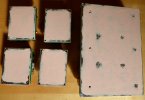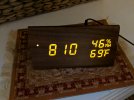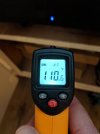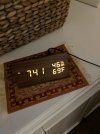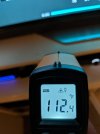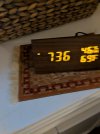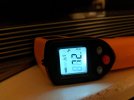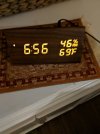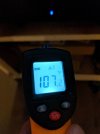Please calm down, I said you were mistaken. I did not accuse you of lying.
Unless you have reinvented the laws of physics it's not possible for the amp to get cooler with increasing power output. the Hypex data above shows very clearly the expected heat output verses electrical power output for both the smps and the nc500. for them to get cooler with increasing power output the lines would be going down. they go up.
The reason I said double the heat power for your amp is that there are TWO nc1200 modules. The graph shows ONE nc500. The nc1200 is not fundamentally more efficient than the nc500 but it can deliver far more current and therefore power. it will therefore get hotter.
Let's read the graphs. make an assumption that you are driving the amp to 10 watts per channel power output into 4 ohms
Smps heat output=25 watts
Nc500 heat output=8 watts therefore 2x nc1200 at least = 16 watts.
Total heat power generated =
41 watts
At 100 watts per channel into 4 ohms
Smps = 35 watts
2x nc1200=28 watts
Total=
63watts
At 500watts per channel into 4 ohms
Smps=75 watts
2x nc1200=72 watts
Total=
150 watts
with a heatsink that has a thermal coefficient of 1.3 degC / watt you would see temperatures of
53.3 degC
81.9 degC
195 degC
It is true to say that music does not have high rms power, maybe 1/3 peak so in the real world the amp is unlikely to be driven beyond 300 watts average, but that would still be 100 watts heat dissipation and 130 deg C with that heatsink.
So what is the thermal resistance of your case? it's construction is in two shell halves with little contact area between the two. therefore it's the bottom half which does most of the dissipation. It's size is approx 33x33cm= 190cm2. The heatsink is flat and horizontal so heat transfer to air is further compromised.
With no forced air flow (fan) your case is about 1.1 deg C / watt. no wonder you had to add 4 fans to keep it cool.
View attachment 179819
It's clear VTV haven't performed even a basic thermal design check.


